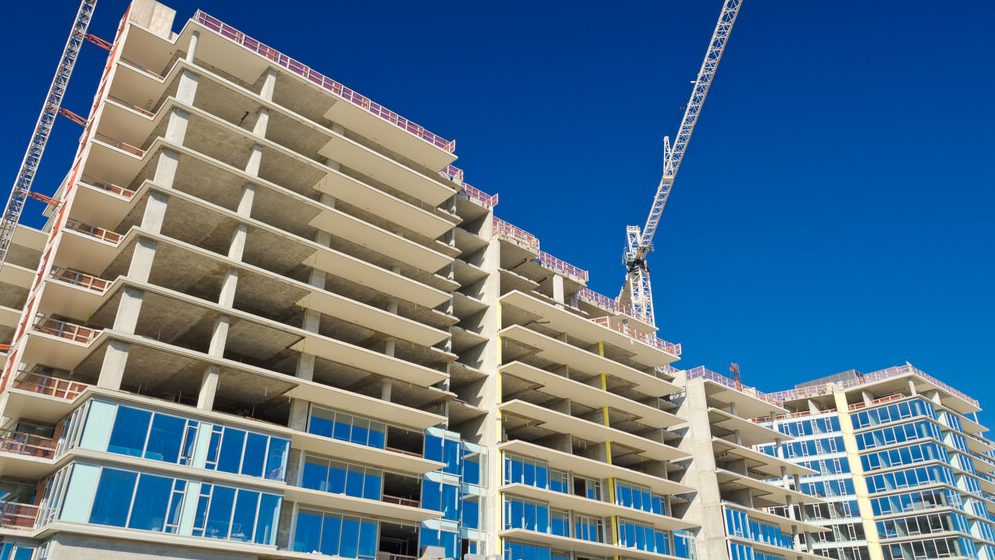Apartment Supply Exceeds Demand in Only Three Markets This Cycle

The nation’s largest 150 apartment markets have about 2 million more apartments today than they did before the current real estate cycle began in 2010. But there’s about 2.5 million more apartment renters.
U.S. apartment demand since 2010 has been robust, topping new supply, which has been significant as well. Most large apartment markets followed that trend, commanding enough demand to essentially meet or exceed elevated supply tallies. Only three markets – Washington, DC, Miami and Austin – went against the grain, with supply proving to be too much for demand.
Washington, DC
Demand drivers are strong in Washington, DC, but supply proved to be stronger in the current cycle. This was one of the country’s new apartment supply hotspots during the cycle, with over 109,000 units delivered. Higher completion volumes were achieved in only two other markets: Dallas (124,700 units) and Houston (110,000 units). Deliveries in the nation’s capital expanded the existing base by 18.4% since early 2010, well ahead of the national average of 12.7%. These recent gains are also well ahead of Washington, DC’s long-term norm. Deliveries started hitting at sizable levels in 3rd quarter 2012, when annual completions crossed the 10,000-unit mark. Supply volumes have remained above that high-water mark every quarter since. By comparison, deliveries averaged at about 6,800 units annually in the decade before the cycle started.

Demand volumes in Washington, DC also topped most markets nationwide, with 104,800 units absorbed during the cycle. Once again, this performance came in just behind the showings in Dallas (137,000 units) and Houston (126,600 units). Unlike what was seen in the Texas markets, however, demand volumes in Washington, DC weren’t enough to match up with supply. In fact, absorption lagged completions by 4,200 units.
While demand has hovered just a shade behind supply throughout much of the cycle, occupancy has remained essentially full between roughly 95% and 96%. Rent growth, however, has paid the price, as annual increases have averaged a meek 2% over the course of the cycle. Though, in the past year or so, rent growth has pushed forward a bit, landing at 2.9% year-over-year in 2nd quarter 2019, that rate remains a tad behind the national norm of 3.1%. That momentum coincides a slight slowdown in completions. But deliveries are scheduled to ramp back up over the next year, suggesting rent growth will likely ease.
Miami
Miami has logged the addition of 30,900 apartment units during the current economic cycle, a volume that swelled the existing base 9.9%, a bit behind the national average. New apartment additions in Miami started building gradually at the beginning of the cycle, and annual supply reached an all-time high near 4,000 units in mid-2015. After that, completion volumes kept rising, reaching a peak above 6,000 units in 2nd quarter 2018.

Of the three markets where supply topped demand, apartment absorption is also more erratic here. This is a market that ebbs and flows with external influences such as the local condo market, international tourism or Atlantic hurricanes. The fluctuations, however, have been slightly more subdued since early 2010. Demand has averaged at about 3,000 units annually since the start of the cycle, with a peak reaching a little over 7,000 units in 2nd quarter 2018, and a low point of around 800 new move-outs in early 2013. In the cycle overall, Miami has absorbed over 29,000 apartments, about 1,800 units shy of total supply.
Occupancy, however, has been somewhat more stable. Miami’s occupancy rate has hovered between roughly 95% and 97% since early 2010. As of 2nd quarter, occupancy here was at 96.4%, notably ahead of the U.S. average of 95.9%. Rent growth in Miami has lagged, with annual increases averaging at 3% in the current cycle. As of 2nd quarter, price hikes have come down recently, landing at just 1.9%, one of the worst year-over-year upturns in the largest top 50 markets in 2nd quarter 2019.
Austin
Austin ranked #7 for apartment supply during the current cycle, with over 64,000 units delivered. This market is no stranger to high construction volumes, as annual completions topped the 7,500-unit mark in 2001, 2003 and again in 2009. But the recent cycle has proven especially eventful, with annual supply reaching that previous high mark in 2014 and pushing past it notably since. The high point for the cycle was the 11,500 units delivered in the year-ending 2nd quarter 2018.

Demand in Austin has also been robust, registering at over 64,000 units during the cycle. While coming in at #10 nationwide, this performance was still about 1,600 units behind concurrent supply volumes. On an annual basis, demand trailed completions from 2014 through mid-2018. However, this trend reversed beginning in the last half of 2018, as demand has topped supply in each quarter since.
Occupancy has remained relatively healthy, between roughly 94% to 96% throughout much of the cycle. At 95.2%, the 2nd quarter rate came in just shy of the U.S. average of 95.9%. Rent change has been solid, averaging at 3.9% annually during the cycle. This is quite a difference from the performance seen in the 10 years prior to the start of the cycle, when price changes were essentially flat, wavering from extremes of more than 9% in 2000 and steep cuts of 12.8% in 2002. Adding up all the recent rent growth during the current cycle, prices are up a total of 41.3%, well ahead of the U.S. norm of 34.6%.






